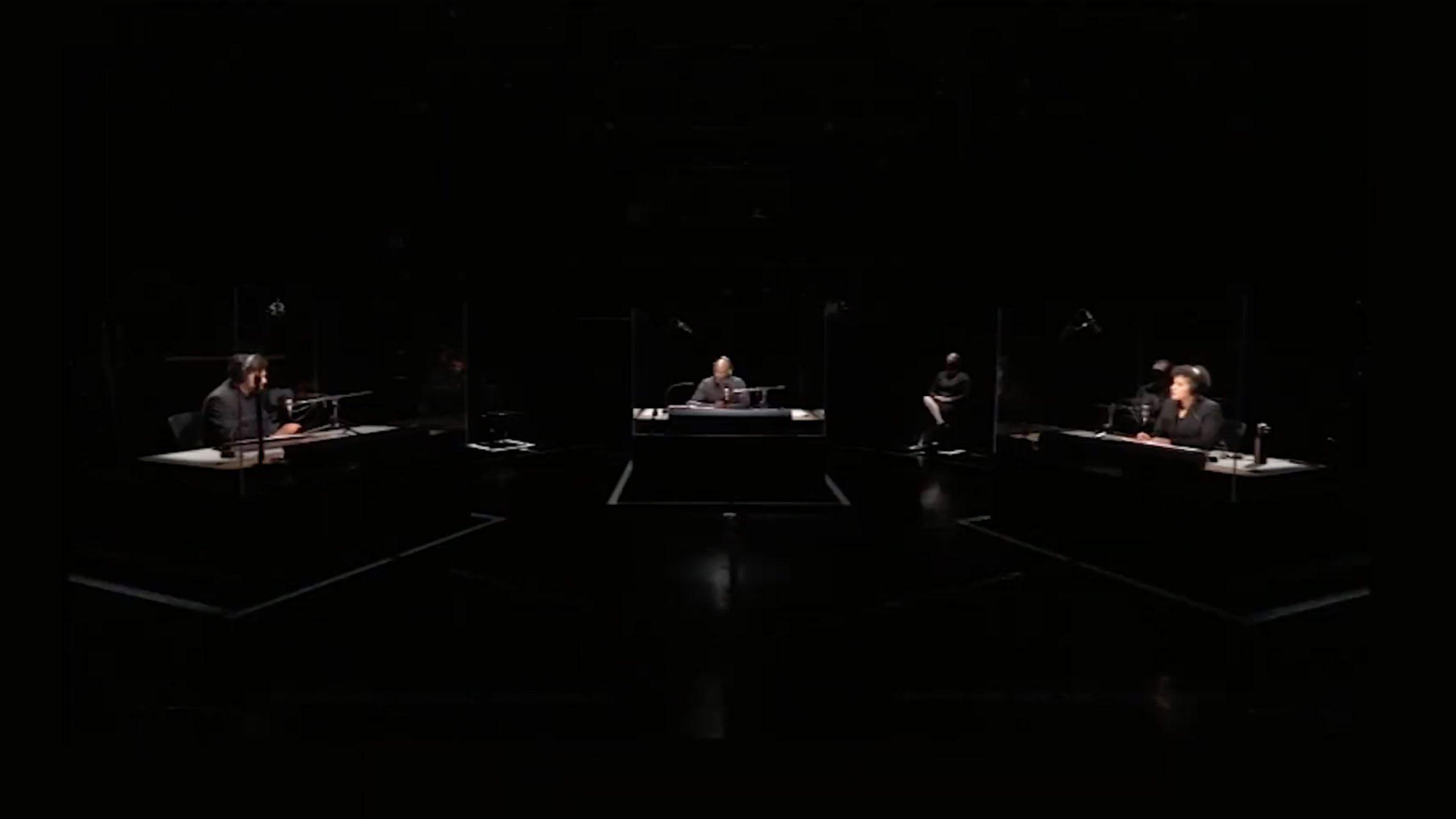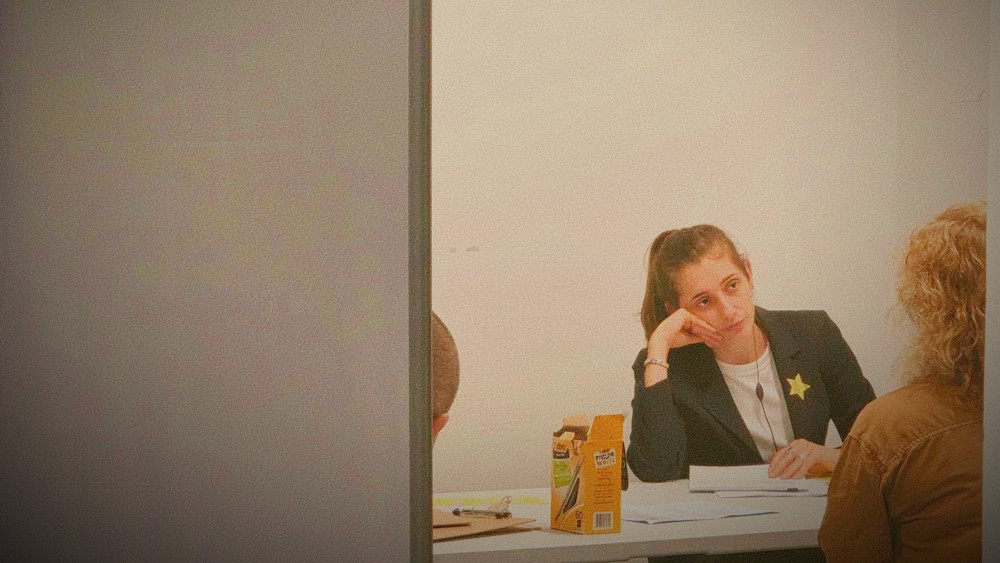“The Titanic disaster serves as a perfect metaphor for our current pandemic,” said Arnel Sancianco. “What happens when danger approaches and we do nothing? Who’s responsible for the deaths of thousands when we could’ve easily steered away from disaster? Who gets to dictate who lives and who dies in times of crisis?”
In April 2012, Titanic: Scenes from the British Wreck Commissioner’s Inquiry, 1912 by award-winning playwright Owen McCafferty debuted in Belfast. Following the infamous maritime disaster, there were two inquiries held to understand how everything went so wrong that the so-called unsinkable ship sank. One inquiry was held in the United States, the investigation conducted by a subcommittee of the Commerce Committee of the United States Senate. The American investigation began just four days after the Titanic sank and concluded a little over a month later after examining the testimonies and affidavits of about 80 witnesses.
The second inquiry was conducted by the British government from May 2 to July 3, 1912. From the transcripts of the testimonies provided in this investigation, McCafferty pulled material verbatim to craft the dialogue of his documentary play. For this inquiry, a little under 100 witnesses were called to answer a script of 26 questions as well as cross-examination ones, meaning McCafferty had to sift through over 25,000 answers on top of his additional research. In both inquiries, very few third-class passengers were interviewed and McCafferty had to make decisions about which major historical figures from the disaster had to be included and which witness testimonies had been overlooked. Heavily researched and with a restrained use of creative license, Titanic asks questions about accountability, about how we condemn from the comfort of not having faced the unimaginable, about hubris, about the morality of following orders, and about the relationship between class and accessing the means of survival. Such questions feel familiar to American audiences at the time of The University of Chicago Court Theatre’s production this month.
Want a look at the show? Check out The Court Theatre’s teaser here.

In a blogpost about the production, scenic designer Arnel Sancianco discusses the play and the thought process behind the show’s development. Developed, rehearsed, filmed, and ultimately streamed as the United States continues to struggle with COVID-19, the show intentionally highlighted its unique circumstances to create a parallel to the play’s own originating disaster. As Sancianco explained, “We decided to embrace the safety protocols and put them on full display. We wanted the space to reflect what it takes to put on theatre and what the handling of this pandemic has forced us into. There are lines and messages on the floor dictating where a mask is required. There are stencils measuring out 6-foot distances. We even chose to use the empty seats of the house as our backdrop so that we recognize not just the missing audiences, but the missing people who’ve passed because of this disaster.”
Sancianco’s phrasing draws the parallel between the disaster of the sinking and COVID-19 and the lives lost from both. Keith Parham, the show’s lighting designer, used the seats as a canvas to highlight absence, but to also evoke the icy North Atlantic waters, lights catching on the seats in flashes that evoke details of the ship as it sunk beneath the waves. Powerful, but quiet, choices also influenced the static and minimalist staging of actors performing from recording booth stations. Utilizing the play’s genre within documentary theater, the booths doubled as the boxes of a courtroom drama and safety protocol tools to keep the cast and crew safe. Such adherence to safety protocol extends past the set design to having the audience watch the crew sanitize the recording booths between scenes and actors.
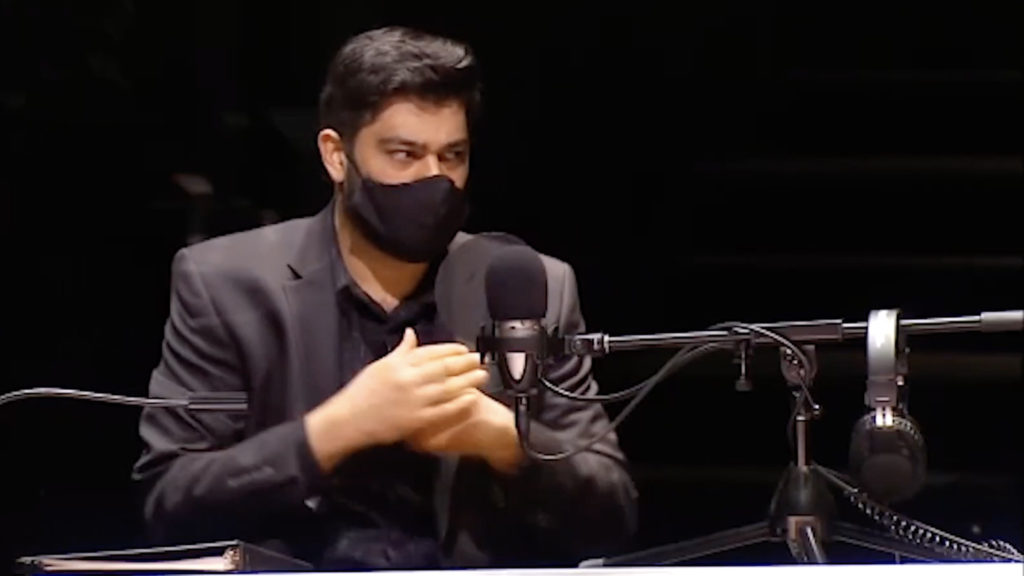
Part of the reasoning behind the static staging was the experimental forethought put into the streaming experience for audiences. At home, the audience had different camera angles to choose from, including close-ups of actors as opposed to wider angles, allowing them to “direct” their gazes as they might in-person to focus on the details, moments, and characters that most intrigue them. Sancianco suggests, “it’s almost as if you are a member of the jury as you experience the testimony in real time.”
Want to see the set? Go on a behind-the-scenes tour here.
With such simple visual structure, the production drew people in through its main feature: the sound design. In an interview with Mikhail Fiksel, the show’s sound designer, Fiksel details the technical choices that enabled the aesthetic and emotional sound choices. The production was “informed by traditional live theatre, audio plays, and investigative journalism podcasts,” Fiksel stated; He delves into the juxtaposition of isolation and intimacy, pointing out that though “the performers are inside audio isolation booths,” there were “microphones through those areas so we can access their voices…we’re transported to the Titanic and to the internal space of the character.”
In fact, the pressures of producing theater during COVID-19 created challenges as much as opportunities for Fiksel. “Through sound, we provide an intimacy that allows us to subvert restrictions imposed on us by the pandemic. Social distancing creates an accessibility challenge for the performer. With microphones, we provide access otherwise not available even in a live performance. You’re inches away from them, sonically. That level of intimacy creates opportunity for empathy. You experience what the character goes through, whether that’s memories of the traumatic experience or them in the moment wrestling with the aftermath.” This simultaneous emphasis on and collapse of space within the production evokes the familiar, shared experiences of the pandemic and its subsequent emotional turmoil.
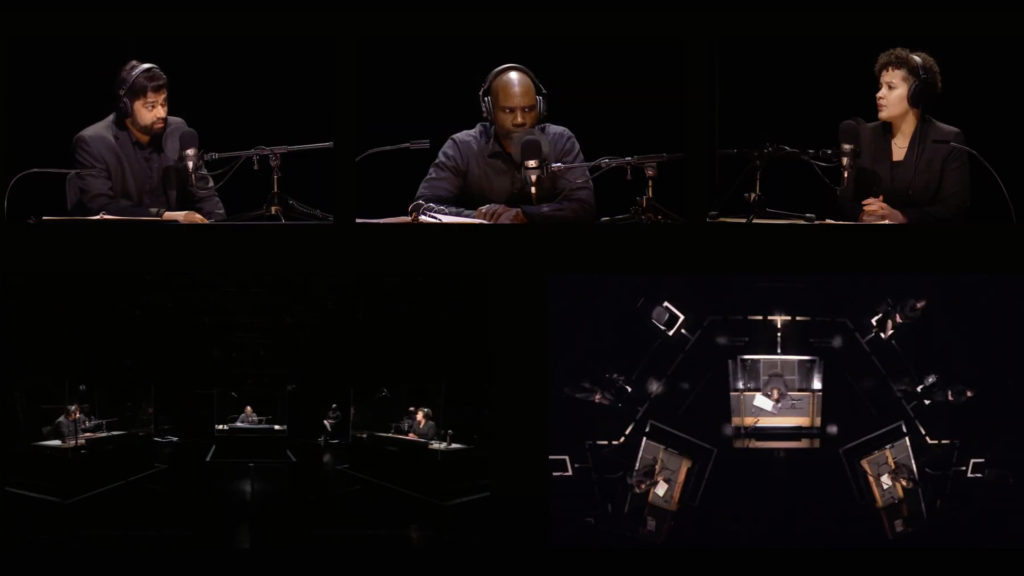
Listen to Fiksel talk about the production here and check out the rehearsals here.
But, the production’s careful selection of inspiration pulls on forms of media already familiar to us. Fiksel shared, “it’s a new way of consuming theatre, but it’s an interesting one and not dissimilar from how we consume other media.” While I find it likely in this statement that Fiksel refers to audio plays and podcasts, it was difficult for me to avoid drawing a line to the televised court cases and inquiries which have occurred over the last year from the trial of Derek Chauvin for the murder of George Floyd (and the upcoming trial of the three other officers in a month) and the second impeachment trial of Trump to the current inquiry into the January 6 insurrection by the House of Representatives. There are merits to discussing the overlaps between the Titanic and each of these examples, but the last is the one I would like to focus on at the moment.
In Titanic, one of the questions McCafferty explores and highlights as a thread throughout the British inquiry is who is accountable and where along the chain of command does the blame sit? In a post about the play, marketing and communications intern Carissa Villagomez explains how “it shows the chain of command and how orders were issued and followed. The tragedy wasn’t wholly a surprise; there was a chain of propelling decisions that contributed to the crash, such as forcing the ship to travel faster even when doing so meant endangering those aboard. Grappling with such decisions to follow orders contributes to portraying the crew involved as part of a human system that is responsive to the whims of those in power and structured to punish individual though.” In the testimonies, many of the “people involved continually blamed everyone but themselves, saying their duties came from superior officers and they were only following orders,” she says in another post. The scenes “make it evident that many of the survivors were desperate to shed the burden of recognition, adamantly framing their actions as done because of someone or something out of their control. Officers repeat that their questionable orders came from a superior official they had to obey without question, and passengers deny the questionable nature of their actions,” wrote Villagomez.
As court cases against the January 6 insurrectionists and the House inquiry continue, these are the same questions which American society is dealing with now, defendants saying they were following orders from the president while Capitol Police Officer Harry Dunn said in his closing statement that “if a hit man is hired and he kills somebody, the hit man goes to jail. But not only does the hit man go to jail, but the person who hired them does. It was an attack carried out on Jan. 6 and a hit man sent them. I want you to get to the bottom of that.” Accountability, orders, power, command, responsibility – these are the issues that over 100 years later, we are still navigating.
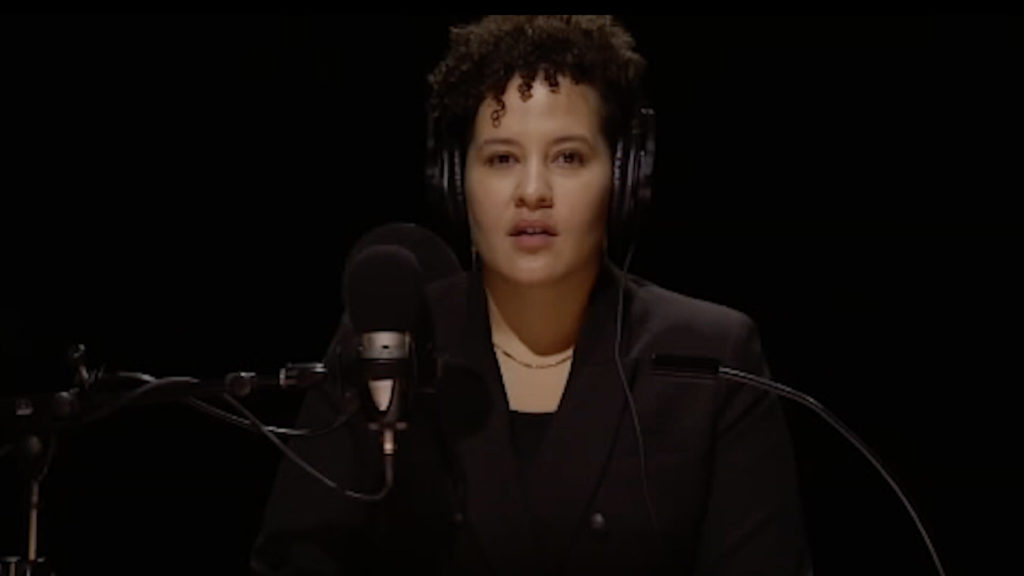
The production highlights many of these questions by drawing parallels with lives lost (and still being lost) due to COVID-19. And we have some of the answers – about who in the government under the Trump administration knew of the virus before March, how much they knew about the deadliness of the virus, and what preventative pandemic strategies had been developed previously and were thrown out over political animosity. And aside from accountability, there is another parallel which is stark: accessibility.
On the Titanic, wealth dictated chances of survival. “The design of the ship and where each class was sequestered also posed questions of accessibility, as the third-class passengers were placed in the more disadvantageous quarters and greeted by passageways they were not told led to escape routes,” explains Villagomez in some background on the play. The disparities in the survival statistics reflect the ways in which paying for accessibility gave those with wealth a greater chance of making it off the Titanic and into a lifeboat. Such issues of accessibility similarly face people in the United States trying to get vaccinated as many populations, often people of color and/or of lower socio-economic status, face greater obstacles to get appointments, to take off time for work, to make the travel arrangements, to say nothing of how vaccine doses have been distributed.
Which leads to another parallel: the lack of lifeboats to evacuate every passenger and crew member on the Titanic and vaccine production for availability not only to the domestic population, but to international populations as well. Due to the inquiries after the sinking of the Titanic, including enough lifeboats for the number of people onboard became a new priority in maritime travel as fingers were pointed at different organizations for the responsibility of ship safety regulations. Without lifeboats, many were doomed to struggle in the frigid waters. As we face the spread of COVID variants which are initializing the return of safety mandates, questions about what preventative measures we can take for the future of specifically COVID and the future threat of pandemics and public health disasters remain.
Balancing out the critical investigation at the heart of the production is a reckoning with the emotional trauma left. In the testimonies, characters often display the trauma they are left to reckon with and Fiksel’s sound design heightens the tension. Fiksel’s haunting work evokes the cries of the passengers left to the icy waters and uses a string ensemble as the phantom band which (in)famously went down with the ship. In and out of these moments was tension-filled electronic music and sonic collages of voiceovers based on the desperate telegrams sent in last moments to loved ones and the frantic warnings of official cables. This sonic waterscape from Fiksel drives the production, collapsing space more than is often done even in-person for live theater. The immediacy of the characters’ trauma, the search for answers, the passing of blame, and the devastating loss serve to remind us that in part, this is, as Carissa Villagomez wrote “the price of hubris.”
To learn more about The Civilians and to access exclusive discounts to shows, join our email list at TheCivilians.org.
Author
-

Leah Putnam (she/her) is a dramaturg from outside of Philadelphia, Pennsylvania. Prior to joining The Civilians, she worked as a dramaturg for Live Arts in Charlottesville, Virginia and has worked on developing new work with writers including LET GO OF ME by Kelley Van Dilla. She is particularly passionate about immersive theater and also has a background in costumes. Leah completed her MA in English at UVA and her BA in English at NYU.
View all posts


